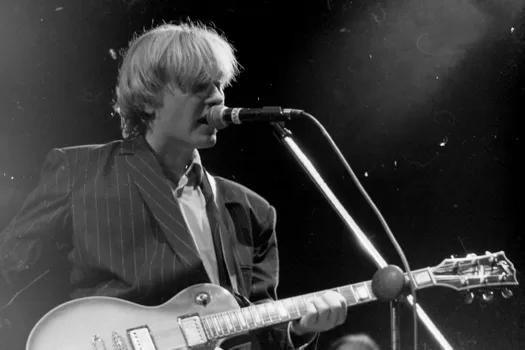Known for his pioneering role in The Saints, Ed Kuepper’s influence extends far beyond the punk movement, delving into genres that reflect his versatile musicianship and artistic vision.
STOP PRESS: As we were writing this page, Ed Kuepper announced a new 4 LP box set of The Saints music and a tour to promote it, covering all The Saints recordings from 1976-1977 including the previously unreleased 1976 mix of the album.
Story continues after this advertisement:
“It’s been an exhausting yet thrilling process being involved in the creation of this box set. It’s been 51 years in the making and has possibly turned out even better than I anticipated. It’s by far the most extensive appraisal of the band, both aurally and visually, that has ever been made available and hopefully reveals some things people may not have known about the band,” said Ed Kuepper.
Featuring founding members guitarist Ed Kuepper and drummer Ivor Hay, The Saints ’73-’78 are joined by honorary members: singer Mark Arm of the legendary Mudhoney, bassist Peter Oxley of Sunnyboys fame, and former Bad Seeds guitarist Mick Harvey.
Together, they recreate the sounds of The Saints’ hugely influential first three albums: I’m Stranded (1977), Eternally Yours (1978), and Prehistoric Sounds (1978).
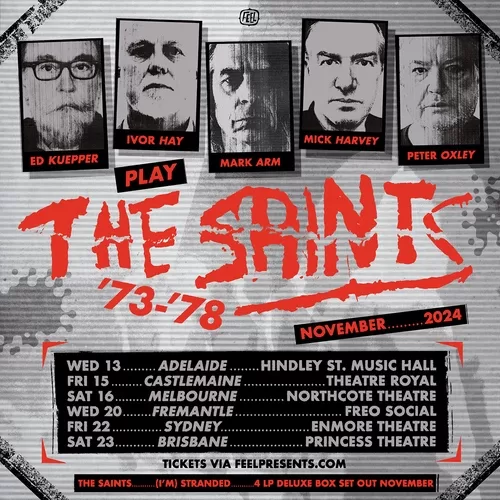
“It all started before Chris died and then kind of got paused for a little bit. It’s just been this really long, ongoing process,” Ed Kuepper told the ABC. “You can never relive the past, it’s going to be of the now, but there’s going to be an atmospheric aesthetic, which harkens to that earlier material.”
Original singer Chris Bailey died in 2022, aged 65.
The Saints’ national tour kicks off at Hindley Street Music Hall, Adelaide, on 13 November 2024 before heading to Castlemaine, Melbourne, Perth, Sydney and Brisbane.
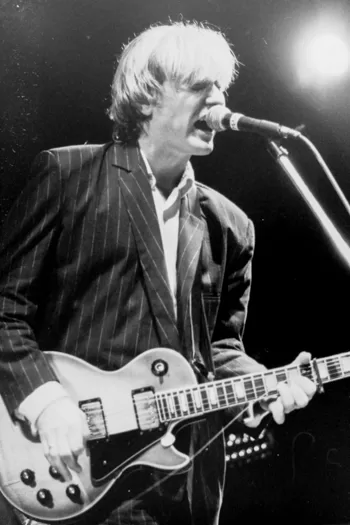

Ed Kuepper in the beginning
Ed Kuepper was born on December 20, 1955, in Bremen, West Germany. His family moved to Brisbane, Australia when he was four years old, where his love affair with music began.
In his early teens, Ed picked up the guitar and embarked on a lifelong journey into the world of music.
“It wasn’t recognized at the time, but I think, in a strange sort of way, my main influence was stuff, I thought, was the absolute epitome of rock and roll, mostly done in the fifties with the likes of Bo Diddley, Chuck Berry, Eddie Cochran and people like that.”
“That sort of music, I thought, had never been really surpassed,” Ed said.
Ed Kuepper and The Saints
It wasn’t long before Ed Kuepper found his musical calling. In 1973, he co-founded The Saints, a punk rock band that would change the Australian music scene forever.
With their blistering guitars and rebellious attitude, The Saints broke the mould, offering an alternative to the prevailing disco and glam rock trends of the time.
The Saints were Chris Bailey on vocals, Ed Kuepper playing guitar, Ivor Hay banging drums, and Kym Bradshaw slapping bass. The songs were written by Ed Kuepper and Chris Bailey.
The Saints’ uncompromising attitude and DIY ethic were pivotal in shaping the Australian punk scene, and their influence extended far beyond their home country. Their gritty, high-energy performances and groundbreaking recordings earned them a place alongside their UK and US counterparts as pioneers of punk rock.
Punk rock history
In the history of punk rock music, each major region had its defining bands that captured the rebellious spirit of the era.
Issued in September 1976, “I’m Stranded” pre-dated vinyl debuts by other punk acts such as the Sex Pistols, The Damned and The Clash.
The USA had the Ramones, whose rapid-fire songs and minimalist style laid the groundwork for the punk rock sound. The Ramones, who are credited with starting the alternative punk rock scene, recorded their debut album, Ramones, in February 1976.
The Damned released ‘New Rose’ in the UK a month after “I’m Stranded” on 22 October 1976.
The Clash‘s first single “White Riot” was released in March 1977.
The UK had the Sex Pistols, whose raw energy and provocative antics challenged societal norms and sparked controversy worldwide. Sex Pistols released their debut album on Virgin Records, Never Mind the Bollocks, Here’s the Sex Pistols, nearly a year after The Saints, on 28 October 1977.
Australia, meanwhile, had The Saints, who brought their own brand of raw, unfiltered energy to the global punk scene.
“We were around just before the UK punk scene and although I never really associated us with that genre, we wouldn’t have received the attention that we did had it not been for the punk invasion that was to come. It was probably one of the first times in Australian music history that an Aussie band was at the forefront of things, rather than following what was happening overseas,” Ed Kuepper said.
The Saints didn’t borrow from the punk sounds coming from U.K and USA. In a case of parallel evolution, they emerged simultaneously, shaped in their native Brisbane by some of the same forces at work in the Northern Hemisphere: high unemployment, stifling social conservatism, and gritty political radicalism.
“I can only simply repeat, for the record, that, in my opinion, the Saints were Australia’s greatest band, and that Chris Bailey was my favorite singer,” said Nick Cave.
I’m Stranded
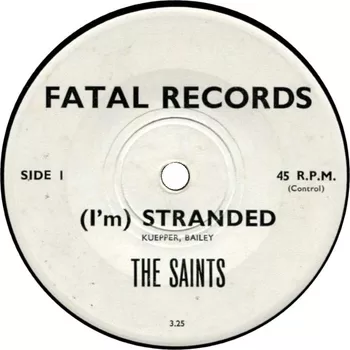

On the evening of 11 May 1976, The Saints recorded two tracks at Window Studios in Brisbane’s West End, “(I’m) Stranded” and “No Time,” with Mark Moffatt producing and mixing.
When no label showed interest, they formed Fatal Records and independently released their debut single in September, making it the first independently produced rock single in Australia.
Their debut single with an initial pressing of 500 copies, “I’m Stranded,” is now considered one of the seminal tracks in punk rock history. A near-mint copy of this single is now valued at $5000.
State Library of Queensland recognises the importance of this piece of music history and has a copy in the John Oxley Library. In 2007, the National Film and Sound Archive added “(I’m) Stranded” to their Sounds of Australia registry.
The Saints’ rise to fame was swift and intense. They released their debut album of the same name in 1977, and it was met with critical acclaim and solidified their position in punk rock history.


The album showcased Ed Kuepper’s distinctive guitar work, which blended punk aggression with a melodic sensibility that set him apart from his contemporaries.
It was later reissued by EMI after the London office directed the Sydney branch to sign the band, following a rave review from Sounds magazine’s John Ingham, who declared it the “Single of this and every week.”
“I have quite a respect for people that can repeat themselves all the time. It doesn’t hold my interest all that much, but the fact that they’re able to do it and that they hold their audience in that process,” said Ed Kuepper.
“Somebody like the Ramones. The first four albums or so are much of a muchness, but good stuff. There’s no musical or lyrical development but they explore it in such a thorough way that they’re not leaving any glimmer, any little crumb of an idea left unexploited. Whereas I guess I’ve always thought I’ve done something different,” Ed said.
Kuepper’s creative restlessness and refusal to be pigeonholed led the band to explore new musical territories.
The Saints’ next albums “Eternally Yours” (1978) and “Prehistoric Sounds” (1978) were a departure from their punk roots, incorporating brass instruments and more complex arrangements.
Success came at a price. The pressures of fame and the relentless touring schedule took a toll on the band, leading to Kuepper’s departure in 1979. But this wasn’t the end of his musical journey; it was merely the beginning of a new chapter.
Ed Kuepper and The Laughing Clowns
In 1981, Ed Kuepper formed The Laughing Clowns, a band that defied easy categorization. Their music drew from various genres, including jazz, punk, and avant-garde, creating a unique sonic tapestry that challenged conventions.
Kuepper’s guitar work continued to evolve, pushing the boundaries of what was possible with six strings.
The 1980s were a period of prolific creativity for Ed Kuepper. He released a series of critically acclaimed solo albums, including “Rooms of the Magnificent” and “Today Wonder.”
These albums showcased his songwriting prowess and his ability to craft intricate melodies that resonated with listeners on a deep emotional level.
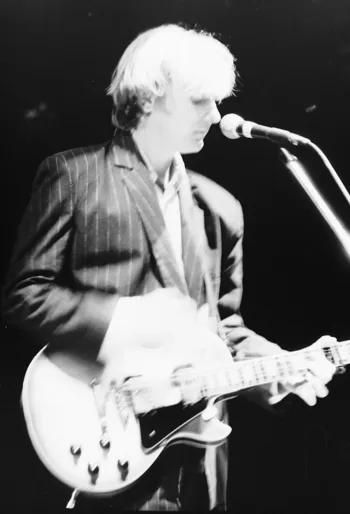

When I showed this photo to Ed Kuepper back in 2014, he posted “thanks Mark Anning, was wondering going by the guitar late 80’s … 88, 89 I think. I bought the Les Paul to replace a SG that got smashed. Wish I still had that guitar.”
These photos were the last band photographs that I did in the 1980s. The Olympus OM-2N film camera had survived seven years going to gigs every week. As you can see from these photographs, the Vivitar 70-210mm zoom lens had reached the end of its life.
As the ’90s dawned, Ed Kuepper’s music took a more introspective turn. His acoustic album “Honey Steel’s Gold” (1991) was a departure from the electric sound he had become known for, but it revealed a newfound vulnerability and depth in his songwriting.
This album marked a turning point in his career, earning him recognition as a masterful storyteller.
Over the years, Ed Kuepper’s music continued to evolve, reflecting his ever-changing outlook on life and art. He explored various musical styles, from folk to blues, always pushing the boundaries of his creativity.
His live performances became legendary, with fans marveling at his virtuoso guitar skills and the raw intensity of his shows.
In the 21st century, Ed Kuepper remained a vital force in the Australian music scene. He continued to release albums, collaborate with other artists, and tour the country, connecting with new generations of music lovers who appreciated his enduring passion and authenticity.
In 2015, Ed Kuepper was nominated for an ARIA award, Best Original Soundtrack/Cast/Show Album, for his ethereal soundtrack to the movie “Last Cab to Darwin,” which was won by the live concert album “Beat the Drum – Celebrating 40 Years of Triple J.” Fans of Ry Cooder’s ‘Paris, Texas’ soundtrack should give the album a listen. You’re welcome!
Ed Kuepper’s music is available from Amazon
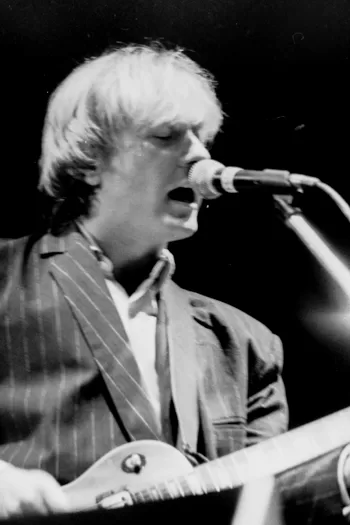

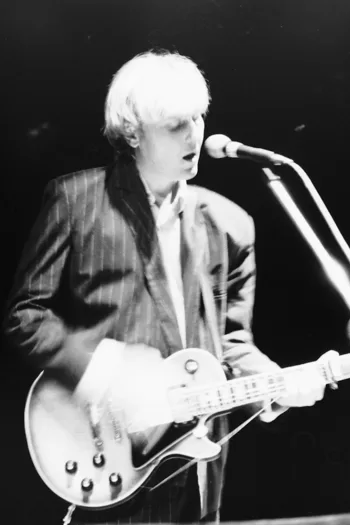

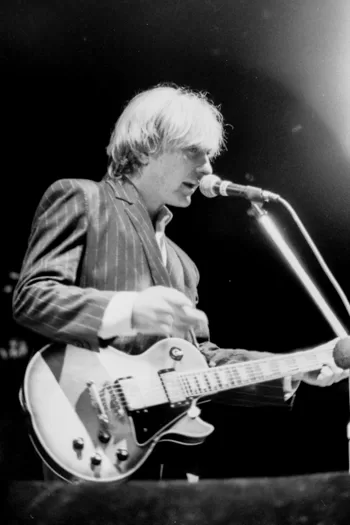

In recent years, he has remained active, releasing new music and performing live. His collaborations with drummer Jim White, known for his work with Dirty Three, have been particularly notable, adding yet another chapter to Kuepper’s storied career.
His journey through the world of music had been a remarkable one, filled with highs and lows, challenges and triumphs. But through it all, one thing remained constant: his unwavering dedication to the art of music.
Ed Kuepper helped shape the Australian music scene. His guitar had been a conduit for his emotions, a vessel for his stories, and a source of inspiration for countless others.


His musical journey is far from over, and with every note he plays, he reminds us that the soul of music can never be extinguished—it can only evolve, adapt, and continue to inspire.
Related stories
Visit our Entertainment pages for more original band photography.
Down Under Rhythms: The Men at Work Saga
Ash Grunwald: Blues and Roots Mastermind
Where is Angry Anderson & Rose Tattoo now?
Radiating the Sounds of Australia: The Radiators’ Journey
The Piano Man: The Life and Music of Billy Joel
The tenth birthday party at Triple Jay
Moonwalk to Immortality: The Michael Jackson Story
Top 10 Rare Valuable and Collectible Vinyl Records


